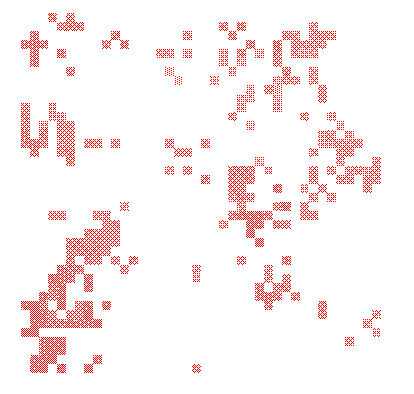
Competition for space or resources puts an upper limit to population sizes. In many cases, however, predators and diseases appear to keep populations in check at much lower levels. An important problem in ecology, and one central to this thesis, is to explain how interacting populations (like populations of prey and predators, plants and herbivores, or hosts and parasites) persist in time. Mathematical models for interacting populations are often unstable: even if there is an ecological equilibrium of prey and predators, oscillations around this equilibrium are not damped, but increase in amplitude, until one (or both) of the populations goes extinct.
Therefore, theoretical ecologists have devoted much effort to understand what factors contribute to the persistence of natural populations. The approach is to add one factor to a model (for example, by assuming that a population has a clumped spatial distribution rather than a homogeneous one) and analyse whether it can change the prediction from extinction to persistence. From such exercises it has become clear that the outcome often critically depends upon the properties of the individuals that make up the populations. Foraging strategies of predators provides a good example: if predators search randomly the end result is extinction whereas if predators seek patches containing most prey the end result may be a stable equilibrium.
A problem with this approach is that extending a population dynamical model with an extra factor results in a model with more assumptions. One either has to carry out observations (which is usually a laborious task, and often just impossible) or one has to analyse the model for the whole range of values the parameter may attain. If the number parameters increases, the number of parameter combinations increases much faster.
The common theme that underlies the chapters of this thesis is that much can be learned from combining population dynamical analyses with evolutionary theory.
This thesis was successfully defended on September 13, 1994
The introduction can be downloaded in pdf format.